
Human evolution is the evolutionary process within the history of primates that led to the emergence of Homo sapiens as a distinct species of the hominid family, which includes the great apes. This process involved the gradual development of traits such as human bipedalism and language, as well as interbreeding with other hominins, which indicate that human evolution was not linear but a web.
Milford Howell Wolpoff is a paleoanthropologist and professor of anthropology at the University of Michigan and its museum of Anthropology. He is the leading proponent of the multiregional evolution hypothesis that explains the evolution of Homo sapiens as a consequence of evolutionary processes and gene flow across continents within a single species. Wolpoff authored the widely-used textbook Paleoanthropology, and co-authored Race and Human Evolution: A Fatal Attraction, which reviews the scientific evidence and conflicting theories about the interpretation of human evolution, and biological anthropology's relationship to views about race.
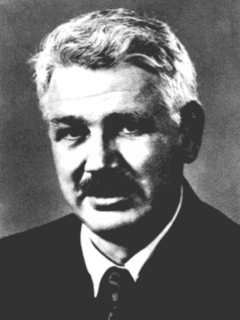
Carleton Stevens Coon was an American anthropologist. A professor of anthropology at the University of Pennsylvania, lecturer and professor at Harvard University, he was president of the American Association of Physical Anthropologists. Coon's theories on race were widely disputed in his lifetime and are considered pseudoscientific in modern anthropology.

Tulane University is a private research university in New Orleans, Louisiana. It was founded as a public medical college in 1834 and became a comprehensive university in 1847. The institution became private under the endowments of Paul Tulane and Josephine Louise Newcomb in 1884. Tulane is the 9th oldest private university in the Association of American Universities, which includes major research universities in the United States and Canada. The Tulane University Law School and Tulane University Medical School are, respectively, the 12th oldest law school and 15th oldest medical school in the United States. Tulane has been a member of the Association of American Universities since 1958 and is classified among "R1: Doctoral Universities – Very high research activity".

Donald Carl Johanson is an American paleoanthropologist. He is known for discovering, with Yves Coppens and Maurice Taieb, the fossil of a female hominin australopithecine known as "Lucy" in the Afar Triangle region of Hadar, Ethiopia.
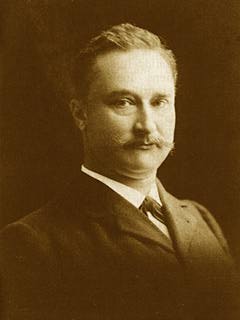
Marie Eugène François Thomas Dubois was a Dutch paleoanthropologist and geologist. He earned worldwide fame for his discovery of Pithecanthropus erectus, or "Java Man". Although hominid fossils had been found and studied before, Dubois was the first anthropologist to embark upon a purposeful search for them.
Paleoanthropology or paleo-anthropology is a branch of paleontology and anthropology which seeks to understand the early development of anatomically modern humans, a process known as hominization, through the reconstruction of evolutionary kinship lines within the family Hominidae, working from biological evidence and cultural evidence.

The paleoanthropological site self-proclaimed as the Cradle of Humankind is located about 50 km (31 mi) northwest of Johannesburg, South Africa, in the Gauteng province. Declared a World Heritage Site by UNESCO in 1999, the site currently occupies 47,000 hectares (180 sq mi) and contains a complex of limestone caves. The registered name of the site in the list of World Heritage Sites is Fossil Hominid Sites of South Africa.
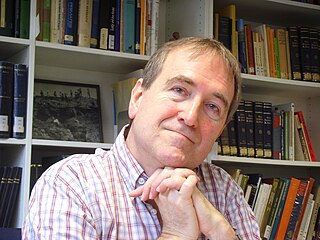
Christopher Brian Stringer is a British physical anthropologist noted for his work on human evolution.
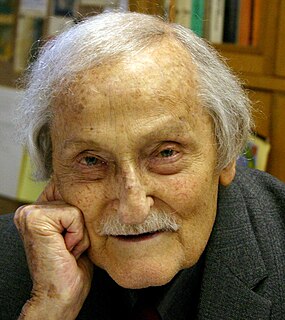
Phillip Vallentine Tobias was a South African palaeoanthropologist and Professor Emeritus at the University of the Witwatersrand in Johannesburg. He was best known for his work at South Africa's hominid fossil sites. He was also an activist for the eradication of apartheid and gave numerous anti-apartheid speeches at protest rallies and also to academic audiences.
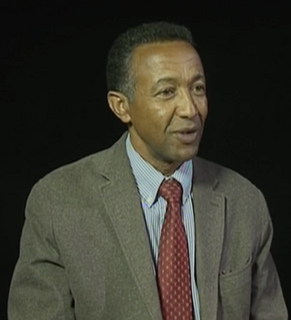
Yohannes Haile-SelassieAmbaye is an Ethiopian paleoanthropologist. An authority on pre-Homo sapiens hominids, he particularly focuses his attention on the East African Rift and Middle Awash valleys. He was curator of Physical Anthropology at the Cleveland Museum of Natural History from 2002 until 2021, and now is serving as the director of the Arizona State University Institute of Human Origins. Since founding the institute in 1981, he has been the third director after Donald Johanson and William Kimbel
Robert Wauchope was a well-respected American archaeologist and anthropologist, whose academic research specialized in the prehistory and archaeology of Latin America, Mesoamerica, and the Southwestern United States.

Lee Rogers Berger is an American-born South African paleoanthropologist and National Geographic Explorer-in-Residence. He is best known for his discovery of the Australopithecus sediba type site, Malapa; his leadership of Rising Star Expedition in the excavation of Homo naledi at Rising Star Cave; and the Taung Bird of Prey Hypothesis.
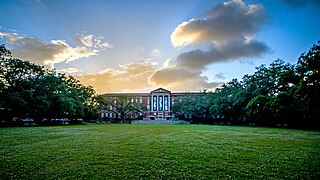
The Tulane University School of Liberal Arts (SLA) is a part of Tulane University and was created in the fall of 2005, pursuant to a university-wide Renewal Plan which in part separated the School of Liberal Arts from the School of Science and Engineering. Brian T. Edwards is the current dean of the School of Liberal Arts, where he is also professor of English, after joining Tulane in 2018. Prior to that, Carole Haber, professor of History at the School, served as dean from 2008 to 2018.
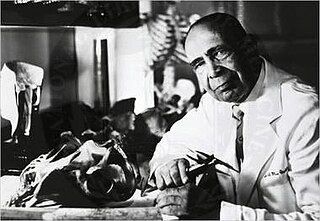
William Montague Cobb (1904–1990) was a board-certified physician and a physical anthropologist. As the first African-American Ph.D in anthropology, and the only one until after the Korean War, his main focus in the anthropological discipline was studying the idea of race and its negative impact on communities of color. His career both as a physician and a professor at Howard University was dedicated to the advancement of African-American researchers and he was heavily involved in civil rights activism. Cobb wrote prolifically and contributed both popular and scholarly articles during the course of his career. His work has been noted as a significant contribution to the development of the sub-discipline of biocultural anthropology during the first half of the 20th century. Cobb was also an accomplished educator and taught over 5000 students in the social and health sciences during his lifetime.

Scott S. Cowen is the President Emeritus and Distinguished University Chair of Tulane University in New Orleans, Louisiana, where he was also Seymour S. Goodman Memorial Professor in the A.B. Freeman School of Business and professor of economics in Tulane's School of Liberal Arts. He most recently served as the Interim President of Case Western Reserve University in Cleveland, Ohio from 2020-2021. He has written more than a hundred peer-reviewed journal articles and five books. His most recent book, Winnebagos on Wednesdays: How Visionary Leadership Can Transform Higher Education, was published by Princeton University Press in 2018. Cowen is the eponym of Tulane's Cowen Institute for Public Education Initiatives. Cowen served as Tulane’s 14th president from July 1998 through June 2014.

Jean-Jacques Hublin is a French paleoanthropologist. He is a professor at the Max Planck Society, Leiden University and the University of Leipzig and the founder and director of the Department of Human Evolution at the Max Planck Institute for Evolutionary Anthropology in Leipzig, Germany. He is best known for his work on the Pleistocene hominins, and on the Neandertals and early Homo sapiens, in particular.
Professor Michael John Morwood was a New Zealand archaeologist best known for discovering Homo floresiensis. In 2012, he received the Rhys Jones Medal by the Australian Archaeological Association.

Dawn of Humanity is a 2015 American documentary film that was released online on September 10, 2015, and aired nationwide in the United States on September 16, 2015. The PBS NOVA National Geographic film, in one episode of two hours, was directed and produced by Graham Townsley. The film describes the 2013 discovery, and later excavation, of the fossil remains of Homo naledi, an extinct species of hominin assigned to the genus Homo, found within the Dinaledi Chamber of the Rising Star Cave system, located in the Cradle of Humankind, South Africa. Additionally, the National Geographic Society has multiple videos on its website covering different phases of the discovery and excavation of the fossils during a two-year period. As of September 2015, fossils of at least fifteen individuals, amounting to 1550 specimens, have been excavated from the cave.

Armand Salvador B. Mijares is a Filipino archaeologist from Manila, Philippines. He works as Professor of Archaeology at the Archaeological Studies Program of the University of the Philippines-Diliman. He specializes in lithic analysis, ceramic petrology, soil micromorphology, paleolithic archaeology and early human migration in Southeast Asia. In 2010, Mijares gained international attention as the main author of a Journal of Human Evolution report about a 67,000-year old foot bone discovered in Callao Cave. That report gave evidence for the newly named species of Homo, called Homo luzonensis, named after the Philippines' largest island—Luzon. The discovery has advanced the complexity of early human colonization of Southeast Asia.















